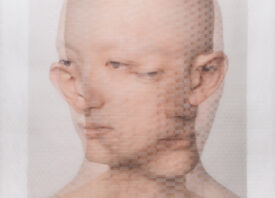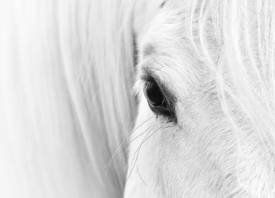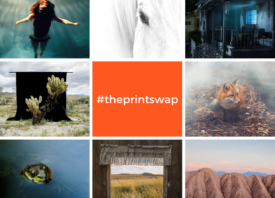Search this site
Curran Hatleberg’s Intimate Photos of Strangers Met on Road Trips Across America
Taking pictures while drifting back and forth along the continental United States, Yale MFA graduate Curran Hatleberg has created a photographic world that can only be described as American. From his vantage point a world of dichotomies and contradictions is revealed to us. His America is at once harsh yet inviting, familiar and utterly perplexing. Beneath a sense of foreboding lives one of hope and possibility. The people have transfixing, unremarkable faces. We feel we are witnessing truths while simultaneously experiencing disbelief. Radiance breaks through a layer of grit and neglect. The commonplace becomes transcendent. Hatleberg takes responsibility only for guiding us into the fringes before slipping away, leaving us to navigate his world on our own. We recently spoke to him about the work.
Although the images are rooted in actual, lived experiences, they have a fictive quality to them. What role does literature play in your work and how does fiction color your photographs?
“Reading fiction has built a kaleidoscopic archive of persuasive subjects and scenarios in my mind that informs my practice. It’s a reserve I can tap into without consciously summoning it and it conditions me to access a state of altered awareness so I can sense potential photographs. After reading, everyone you pass on the street becomes fascinating or mysterious; the scenery shifts and everything seems infused with potent meaning. Recall Benny Profane’s drunken vision: “Dog into wolf, light into twilight, emptiness into waiting presence…” It enables a kind of tuning in, so when the right moment slops over the glass I can drink it up.”
Your pictures capture people as they are moving along a trajectory, alluding to their pasts as well as what is yet to come. Is time an important element in your work?
“The sense of time in the work is twofold. There is the “present” moment depicted, that I control, and the limitless imaginative time before and after the image that the viewer designs. A photograph can only represent the smallest middle piece of a larger unknown story. It’s the suspended instant—a crossroads—out of which the future will presently begin. It’s like the final moment before the end-of-the-evening whiskey that spawns a myriad of unpredicted results. It might send you to the safety of your home, snoring in your clothes or to the hospital, handcuffed to the gurney. It’s a moment that is suggestive precisely because of its lack of narrative clarity.
“Anything is possible. That’s something that makes pictures so powerful. Conceptually I’m not interested in revealing a person’s factual before and after. I don’t like providing those answers. Unlike reportage photography which gives up the who, what, where, when, I am interested in asking questions that will provoke more questions. To me, it’s the open-ended quality of a picture that’s so amazing—when it welcomes creative interpretation and invention from the viewer. It’s a choose-your-own-adventure scenario.”
Approaching people to photograph is an awkward and often frightening experience, yet there is an intimacy and rapport that exists between you and the people in your pictures. How you are able to achieve this level of comfort with total strangers and if it is different than when you are photographing people you are close to?
“Have you ever sat down at a bar next to a stranger that turned to you and began unpacking the deepest, most personal intimacies of his life? Most people are as interested in us as we are in them—even if the interest goes only as far as a non-judging, anonymous ear. We forget that. I think approaching people to photograph is difficult because it makes us feel a bit more visible to ourselves. It forces us to confront all the preconceptions, judgments and biases that we carry around like unwanted leftovers. When we approach someone we weigh ourselves against them and see our own dilemmas and joys, our own failures and successes.
“All you can really do is enter a situation honestly and openly and see if it works out. There are no shortcuts or secrets—and while awkwardness can, and does frequently occur, that’s just a side-note. That can even be fun. You just swallow your pride and march over because the alternative is really so much worse. Otherwise you end up furious or disheartened or both, cursing yourself softly under your breath, obsessing over the missed opportunity that will never be available again.”
This post was contributed by photographer Bryson Rand.















